CARD9 impacts colitis by altering gut microbiota metabolism of tryptophan into aryl hydrocarbon receptor ligands
- PMID: 27158904
- PMCID: PMC5087285
- DOI: 10.1038/nm.4102
CARD9 impacts colitis by altering gut microbiota metabolism of tryptophan into aryl hydrocarbon receptor ligands
Abstract
Complex interactions between the host and the gut microbiota govern intestinal homeostasis but remain poorly understood. Here we reveal a relationship between gut microbiota and caspase recruitment domain family member 9 (CARD9), a susceptibility gene for inflammatory bowel disease (IBD) that functions in the immune response against microorganisms. CARD9 promotes recovery from colitis by promoting interleukin (IL)-22 production, and Card9(-/-) mice are more susceptible to colitis. The microbiota is altered in Card9(-/-) mice, and transfer of the microbiota from Card9(-/-) to wild-type, germ-free recipients increases their susceptibility to colitis. The microbiota from Card9(-/-) mice fails to metabolize tryptophan into metabolites that act as aryl hydrocarbon receptor (AHR) ligands. Intestinal inflammation is attenuated after inoculation of mice with three Lactobacillus strains capable of metabolizing tryptophan or by treatment with an AHR agonist. Reduced production of AHR ligands is also observed in the microbiota from individuals with IBD, particularly in those with CARD9 risk alleles associated with IBD. Our findings reveal that host genes affect the composition and function of the gut microbiota, altering the production of microbial metabolites and intestinal inflammation.
Conflict of interest statement
The authors declare no competing financial interests.
Figures
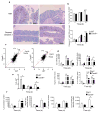
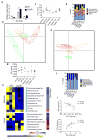
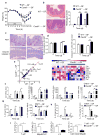
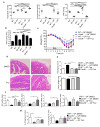
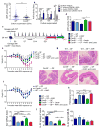

Comment in
-
IBD: Dysbiosis underlies CARD9 risk alleles in colitis.Nat Rev Gastroenterol Hepatol. 2016 Jun;13(6):316. doi: 10.1038/nrgastro.2016.82. Epub 2016 May 18. Nat Rev Gastroenterol Hepatol. 2016. PMID: 27188821 No abstract available.
-
Mucosal immunology: Tryptophan triggers tranquillity.Nat Rev Immunol. 2016 May 27;16(6):338-9. doi: 10.1038/nri.2016.66. Nat Rev Immunol. 2016. PMID: 27231049 No abstract available.
-
Regulating inflammation with microbial metabolites.Nat Med. 2016 Jun 7;22(6):581-3. doi: 10.1038/nm.4117. Nat Med. 2016. PMID: 27270775 No abstract available.
Similar articles
-
Dissecting the respective roles of microbiota and host genetics in the susceptibility of Card9-/- mice to colitis.Microbiome. 2024 Apr 23;12(1):76. doi: 10.1186/s40168-024-01798-w. Microbiome. 2024. PMID: 38649950 Free PMC article.
-
Caspase recruitment domain 9, microbiota, and tryptophan metabolism: dangerous liaisons in inflammatory bowel diseases.Curr Opin Clin Nutr Metab Care. 2017 Jul;20(4):243-247. doi: 10.1097/MCO.0000000000000382. Curr Opin Clin Nutr Metab Care. 2017. PMID: 28399013 Review.
-
SYK-CARD9 Signaling Axis Promotes Gut Fungi-Mediated Inflammasome Activation to Restrict Colitis and Colon Cancer.Immunity. 2018 Sep 18;49(3):515-530.e5. doi: 10.1016/j.immuni.2018.08.024. Immunity. 2018. PMID: 30231985 Free PMC article.
-
Berberine improves colitis by triggering AhR activation by microbial tryptophan catabolites.Pharmacol Res. 2021 Feb;164:105358. doi: 10.1016/j.phrs.2020.105358. Epub 2020 Dec 4. Pharmacol Res. 2021. PMID: 33285228
-
CARD9 Signaling in Intestinal Immune Homeostasis and Oncogenesis.Front Immunol. 2019 Mar 11;10:419. doi: 10.3389/fimmu.2019.00419. eCollection 2019. Front Immunol. 2019. PMID: 30906296 Free PMC article. Review.
Cited by
-
Contribution of tryptophan and its metabolites to transplant outcome: a mini-review.Front Immunol. 2024 Oct 15;15:1395421. doi: 10.3389/fimmu.2024.1395421. eCollection 2024. Front Immunol. 2024. PMID: 39474416 Free PMC article. Review.
-
Impaired Kynurenine Pathway in Inflammatory Bowel Disease.J Clin Med. 2024 Oct 15;13(20):6147. doi: 10.3390/jcm13206147. J Clin Med. 2024. PMID: 39458097 Free PMC article.
-
Host-pathobiont interactions in Crohn's disease.Nat Rev Gastroenterol Hepatol. 2024 Oct 24. doi: 10.1038/s41575-024-00997-y. Online ahead of print. Nat Rev Gastroenterol Hepatol. 2024. PMID: 39448837 Review.
-
Liver abscess induced by intestinal hypervirulent Klebsiella pneumoniae through down-regulation of tryptophan-IPA-IL22 axis.iScience. 2024 Aug 30;27(10):110849. doi: 10.1016/j.isci.2024.110849. eCollection 2024 Oct 18. iScience. 2024. PMID: 39429788 Free PMC article.
-
Giardia spp.-induced microbiota dysbiosis disrupts intestinal mucin glycosylation.Gut Microbes. 2024 Jan-Dec;16(1):2412676. doi: 10.1080/19490976.2024.2412676. Epub 2024 Oct 16. Gut Microbes. 2024. PMID: 39412866 Free PMC article.
References
-
- Molodecky NA, et al. Increasing incidence and prevalence of the inflammatory bowel diseases with time, based on systematic review. Gastroenterology. 2012;142:46–54.e42. quiz e30. - PubMed
-
- Ananthakrishnan AN. Epidemiology and risk factors for IBD. Nat Rev Gastroenterol Hepatol. 2015;12:205–217. - PubMed
-
- Hsu YMSM, et al. The adaptor protein CARD9 is required for innate immune responses to intracellular pathogens. Nat Immunol. 2007;8:198–205. - PubMed
MeSH terms
Substances
Grants and funding
LinkOut - more resources
Full Text Sources
Other Literature Sources
Molecular Biology Databases

